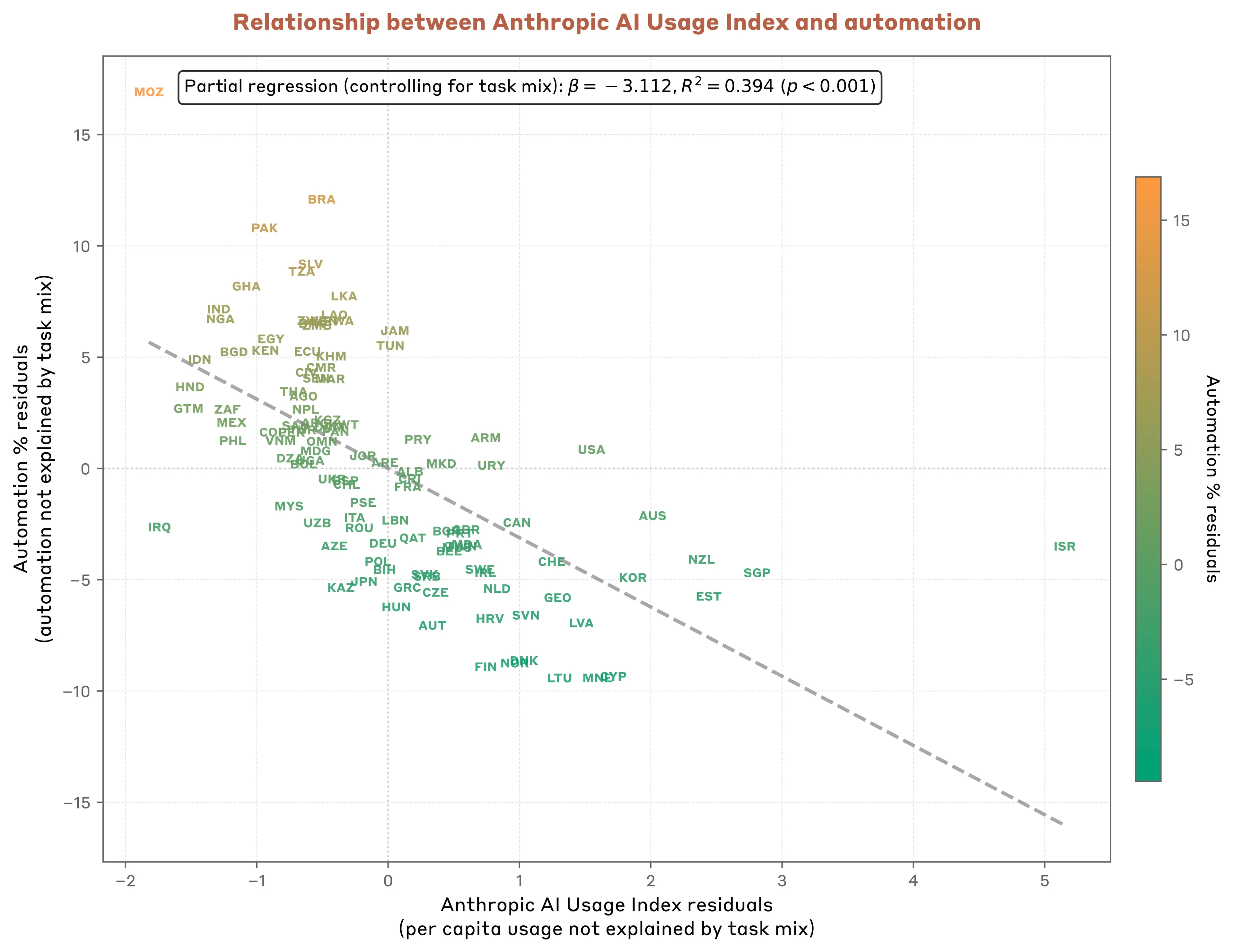Navigating AI's Economic Shift: Challenges and Strategies
Explore Anthropic's role in AI's economic impact and the policy responses needed to navigate this global transformation.

Navigating AI's Economic Shift: Challenges and Strategies
Anthropic, the leading enterprise AI company behind Claude, is at the center of discussions about how advanced artificial intelligence is transforming economies worldwide—and what policymakers must do to prepare. With global adoption of generative AI accelerating, Anthropic’s latest research and rapid business growth underscore both the opportunities and challenges that AI presents for labor markets, productivity, and regulation.
The Scale and Speed of AI Adoption
Anthropic’s Claude family of large language models (LLMs) has become a cornerstone of enterprise AI, with the company claiming top market share and reporting a staggering run-rate revenue jump from $87 million at the start of 2024 to over $5 billion by August 2025. This growth, fueled by a $13 billion Series F funding round at a $183 billion valuation, reflects unprecedented demand for AI in business operations—especially outside the United States, where nearly 80% of Claude’s consumer usage originates. Countries like South Korea, Australia, and Singapore are leading in per-capita adoption, signaling a truly global transformation.
API usage data reveals that enterprises primarily deploy Claude for specialized, high-value tasks—especially in software development, where coding, debugging, and technical issue resolution account for a significant share of activity. However, AI is also increasingly used for marketing, recruitment, and administrative automation, demonstrating its versatility across business functions. The proportion of “directively” automated tasks has risen sharply, from 27% to 39%, indicating that AI is taking on greater responsibility within organizations.
AI’s Economic Impact: Productivity Gains and Labor Market Shifts
The economic impact of AI is already measurable. Businesses report substantial productivity gains, particularly in sectors where precision and automation matter most, such as finance, healthcare, and cybersecurity. Anthropic’s models are designed not just for raw capability but for safety, interpretability, and alignment—enabling enterprises to trust AI with increasingly autonomous responsibilities. This trust is critical as AI systems begin to handle mission-critical operations in regulated industries.
However, the rapid automation of certain tasks raises important questions about the future of work. While AI augments many jobs, it also displaces others, especially those involving routine, repetitive tasks. The Anthropic Economic Index highlights that adoption is uneven: computer and mathematical tasks dominate API usage, while education, arts, and entertainment see much lower penetration in enterprise settings. This suggests that AI’s impact will be felt most acutely in technical and administrative roles, at least in the near term.
Policy Responses: Navigating the AI Transition
As AI adoption accelerates, governments and institutions are grappling with how to respond. Key policy areas include:
- Labor market transitions: Supporting workers displaced by automation through retraining programs, education reforms, and social safety nets.
- Regulation and safety: Ensuring AI systems are transparent, auditable, and aligned with human values—a core focus of Anthropic’s research.
- Data privacy and security: Establishing frameworks to protect sensitive information as AI handles more business and personal data.
- Global coordination: Addressing cross-border challenges, such as harmonizing standards and preventing a “race to the bottom” in AI governance.
Anthropic’s leadership has consistently emphasized a “safety-first” approach, investing heavily in alignment research to steer AI behavior and mitigate risks. This philosophy not only differentiates the company but also appeals to enterprises and regulators concerned about the reputational and operational risks of deploying advanced AI.
Context and Implications
The rise of Anthropic and similar AI firms marks a pivotal moment in technological history. AI is no longer a promise—it is a daily reality for businesses and developers worldwide. The speed of adoption, especially in enterprise environments, is reshaping industries and forcing a reevaluation of economic and social policies.
For policymakers, the challenge is to harness AI’s benefits—boosting productivity, fostering innovation, and improving services—while mitigating its disruptions. This requires a balanced approach: encouraging innovation and investment in AI, while ensuring that the gains are broadly shared and that workers are not left behind.
International cooperation will be essential. As AI adoption spreads globally, no single country can address these challenges alone. Forums for sharing best practices, harmonizing regulations, and coordinating research into AI safety and ethics will become increasingly important.
Visualizing the AI Transformation
While direct images from Anthropic’s policy reports are not publicly available, the company’s official channels frequently feature product screenshots of Claude in enterprise settings, leadership portraits (e.g., CEO Dario Amodei, President Daniela Amodei), and infographics illustrating AI adoption trends and economic impact. For a visual representation of the topic, consider:
- Claude product interface: Showcasing the AI assistant in a business context, such as a dashboard for code generation or data analysis.
- Leadership team: Images of Dario and Daniela Amodei, highlighting their roles in shaping Anthropic’s safety-first mission.
- Economic impact infographics: Visuals depicting the growth in AI automation, geographic adoption rates, and shifts in labor market tasks.
These visuals help audiences grasp the scale and nature of the changes underway, making the abstract economic and policy discussions more concrete.
Conclusion
Anthropic’s ascent to the forefront of enterprise AI underscores both the transformative potential and the complex challenges posed by advanced artificial intelligence. As businesses integrate Claude and similar systems into their core operations, the economic impact is already being felt—in productivity gains, shifting labor demands, and new policy imperatives. The coming years will test the ability of governments, companies, and societies to navigate this transition wisely, ensuring that AI serves as a force for inclusive growth rather than disruption. Anthropic’s emphasis on safety, alignment, and global collaboration offers a model for how the industry can contribute to these goals, but the ultimate responsibility lies with all stakeholders to shape an AI-driven future that benefits everyone.



